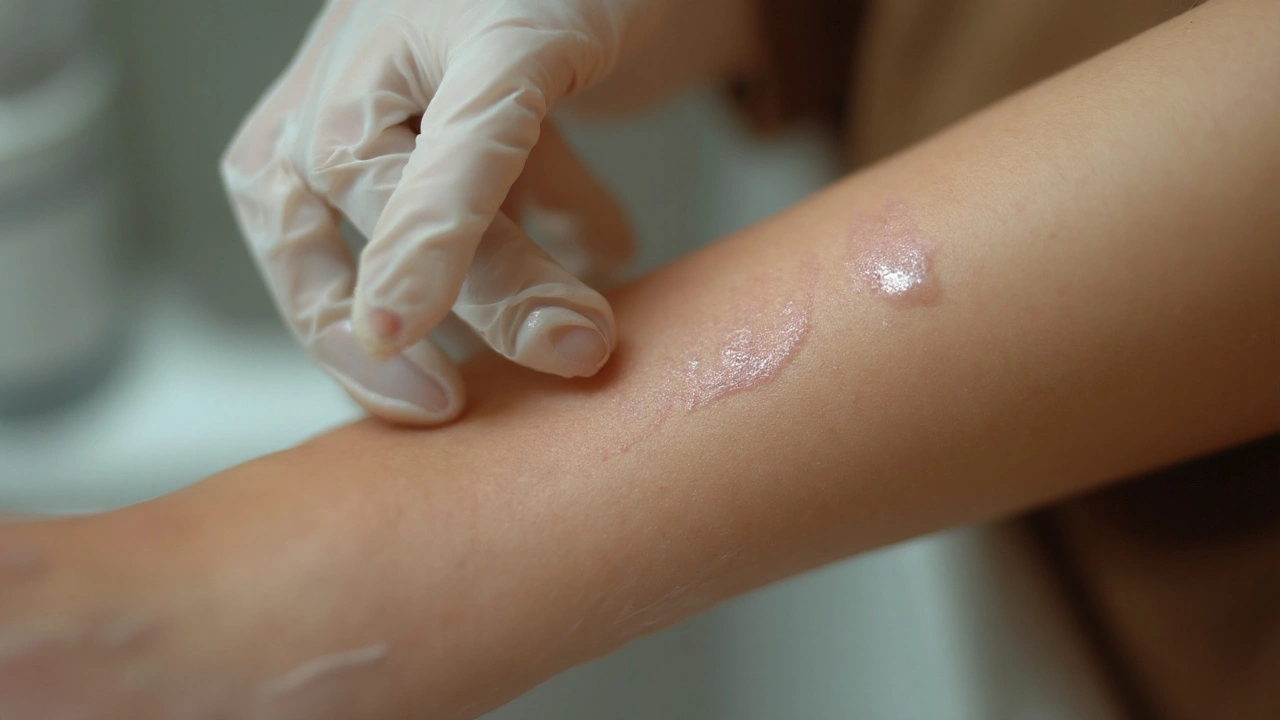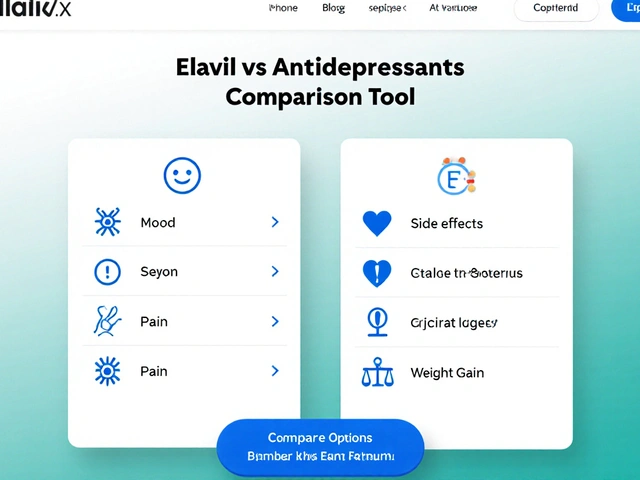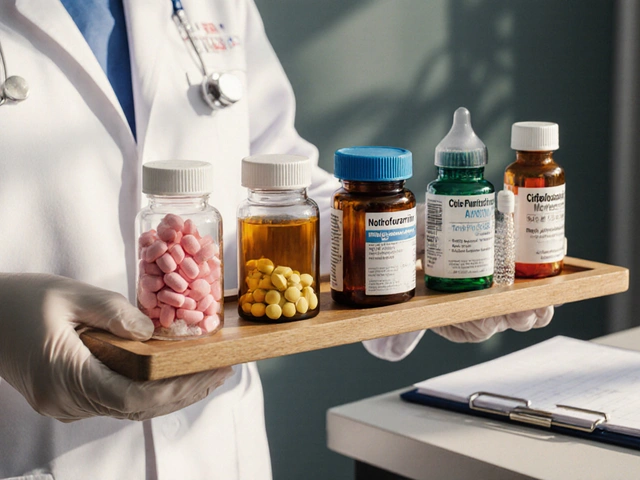TL;DR:
- Elidel (pimecrolimus) is a prescription cream for mild‑to‑moderate eczema.
- Apply a thin layer to affected skin twice daily; don’t use on infected or broken skin.
- Common side effects are mild burning, itching, or redness; serious infections are rare.
- It’s non‑steroidal, so it can be safer for long‑term use on sensitive areas like the face.
- Talk to your doctor if you notice persistent irritation or have a weakened immune system.
What Is Elidel and How Does It Work?
Elidel is the brand name for pimecrolimus, a topical calcineurin inhibitor. Unlike steroid creams, it doesn’t thin the skin; instead, it blocks an enzyme that triggers inflammation in the skin’s immune cells. By calming that over‑active response, the cream reduces redness, itching, and the formation of eczema plaques.
The medication was first approved in the UK in 2005 and has since become a go‑to option for patients who can’t tolerate steroids or need a gentler long‑term solution. It’s particularly popular for treating eczema on delicate areas - the face, neck, and skin folds - where steroids often cause irritation.
Because it works at the cellular level, Elidel doesn’t act instantly. Most users notice improvement within a week, with full benefits after 2‑4 weeks of consistent use. The drug is available only by prescription, meaning a doctor will evaluate whether you’re a good candidate based on your eczema severity, medical history, and any current medications.
One key point that trips people up: Elidel is not an antihistamine and won’t stop an acute allergic reaction. It’s meant for chronic eczema management, not a quick fix for hives or insect bites.
When and How to Use Elidel Cream Safely
Using Elidel correctly maximises benefits and minimises irritation. Follow these steps each time you apply the cream:
- Wash your hands. Clean hands prevent contamination of the medication and the affected skin.
- Gently cleanse the eczema‑affected area with lukewarm water and a mild, fragrance‑free cleanser. Pat dry; avoid rubbing.
- Apply a pea‑size amount (roughly 0.5g) to the spot. Spread it thinly - you want a barely visible film, not a thick coating.
- Massage gently for 10-15seconds until the cream disappears. This helps the active ingredient penetrate.
- Wash your hands again unless you’re treating hand eczema; this reduces accidental transfer to eyes or mouth.
Typical dosing is twice a day (morning and night) for the first 2‑4 weeks, then taper down to once daily or as your doctor advises. If you miss a dose, apply it as soon as you remember - but don’t double up.
What to avoid:
- Applying on open cuts, sores, or infected skin. The cream can worsen infection risk.
- Using occlusive dressings (like plastic wrap) unless your doctor explicitly says so.
- Combining with other topical steroids on the same spot without medical guidance.
For children older than 2years, the same protocol applies, but the prescribing doctor may start with a reduced amount to monitor tolerance. Pregnant or breastfeeding mothers should discuss risks with their healthcare provider, as safety data is limited.

Benefits, Risks & Common Side Effects
Elidel offers a few clear advantages over traditional steroid creams:
- Skin‑thinning risk is negligible. This makes it suitable for long‑term use on the face and flexural areas.
- It can be used intermittently (“weekends off”) without rebound flare‑ups that sometimes occur after steroid withdrawal.
- Because it’s non‑steroidal, it doesn’t provoke steroid‑related systemic side effects like adrenal suppression.
However, no medication is risk‑free. The most frequently reported side effects are mild and transient:
- Burning or stinging sensation at the application site (usually fades after a few days).
- Itching or dryness.
- Redness or a watery rash that looks like a mild allergic reaction.
Serious, though rare, concerns include:
- Local skin infections (impetigo, cellulitis) - more common if you apply over cracked skin.
- Potential increased risk of certain skin cancers or lymphoma. Regulatory agencies (MHRA, FDA) have issued a “black box” warning, but large‑scale studies have not found a definitive link. Stay vigilant and report any new growths to your doctor.
People with compromised immune systems (e.g., organ‑transplant recipients, HIV) should discuss alternatives, as blocking calcineurin can theoretically dampen immune surveillance.
Below is a quick comparison of Elidel with two common steroid creams used for eczema:
| Feature | Elidel (pimecrolimus) | Hydrocortisone 1% (mild steroid) | Clobetasol 0.05% (potent steroid) |
|---|---|---|---|
| Drug class | Calcineurin inhibitor | Corticosteroid | Corticosteroid |
| Prescription needed | Yes | Often OTC (low strength) | Yes |
| Typical use area | Face, neck, flexures | Body, mild areas | Severe patches, limited duration |
| Skin thinning risk | Negligible | Low‑moderate | High (if used >2weeks) |
| Onset of relief | 1‑2weeks | Within days | Within days |
| Common side effects | Burning, itching | Dryness, irritation | Atrophy, telangiectasia |
Choosing between them hinges on the location of the eczema, how long you need treatment, and your tolerance for steroid‑related side effects.
Frequently Asked Questions about Elidel
Can I use Elidel on my child's face?
Yes. It’s actually one of the preferred options for facial eczema in children over 2years, because it avoids the skin‑thinning that steroids can cause.
How long is it safe to stay on Elidel?
Clinical guidelines suggest up to 12months of intermittent use (e.g., 2weeks on, 2weeks off) for chronic eczema. Your dermatologist will set a schedule based on response and any risk factors.
Do I need to stop using Elidel before surgery?
Generally, you can continue, but inform the surgical team. Because it’s a topical immunomodulator, there’s a theoretical risk of delayed wound healing, especially on large application sites.
Will Elidel interact with my oral meds?
Topical use has minimal systemic absorption, so interactions are rare. However, if you’re on systemic immunosuppressants (e.g., cyclosporine), discuss combined effects with a doctor.
What should I do if I develop a rash after starting Elidel?
A mild rash can be the initial burning sensation. If it worsens, spreads, or is accompanied by fever, stop the cream and seek medical advice promptly.
Is there a generic version?
Yes, pimecrolimus is available as a generic cream in many countries, often at a lower price point. Check with your pharmacist for availability.

Next Steps & Troubleshooting
If you’ve decided to try Elidel, the first move is to book an appointment with a GP or dermatologist. Bring a list of your current skin‑care products and any past reactions to medications - this helps the prescriber gauge suitability.
Once you have the prescription:
- Read the patient information leaflet thoroughly; it outlines storage (room temperature, no freezing) and expiry.
- Start with a small test area (e.g., a patch on the inner forearm) for 48hours to see if you experience intense burning.
- If the test is tolerated, follow the twice‑daily regimen described earlier.
- Keep a simple diary: note the date, area treated, and any sensations. This record is useful if you need to discuss adjustments with your doctor.
Common hiccups and how to fix them:
- Persistent burning after a week - try applying after a light moisturizer to create a barrier.
- Skin looks dry - use an emollient (e.g., plain petrolatum) at least an hour after the cream, not before.
- Flare‑up despite treatment - ensure you’re not using harsh soaps or hot water, which can undermine the cream’s effect.
Always keep the line of communication open with your healthcare provider. Adjustments are normal, especially when managing a chronic condition like eczema.








Elidel? Man, I’ve been using this since my daughter got that nasty face eczema at 18 months-no steroids, no scary thinning, just quiet relief. The burning? Yeah, first two days felt like a bee sting with a side of regret. But after that? Pure magic. I don’t even use moisturizer before it anymore-just clean skin, pea-sized blob, gentle pat. It’s not a miracle, but it’s the closest thing to peace I’ve found in this eczema hell.
Of course it works-because it’s basically a chemical muzzle for your immune system. But let’s not pretend this isn’t a Band-Aid on a bullet wound. The FDA warning? The black box? You think that’s there for fun? People are applying this to their eyelids like it’s chapstick while ignoring the fact that they’re suppressing their skin’s natural defenses. And then they wonder why they get shingles at 32.
I used Elidel for six months on my neck after steroid burnout. Burned like hell the first week. Then nothing. Skin returned to normal color. No more flaking. No more itching at 3am. I didn’t even think about it after month two. Just applied and forgot. Best decision I made for my skin since ditching fragranced soap.
Why are we even talking about this? You’re all ignoring the real issue-Big Pharma invented this because steroids are too cheap and people were getting too good at using them. They needed a $200/month alternative. The science? Meh. The profit? Perfect. Also, I used it once. Felt like my face was being microwaved. Stopped. Skin got better on its own anyway. Coincidence? I think not.
Let’s be clear: this isn’t medicine-it’s a social contract between dermatologists and patients who are too scared to let their skin breathe. The fact that you’re applying a calcineurin inhibitor to your child’s face because you’re afraid of a little hydrocortisone? That’s not healthcare. That’s fear-based consumerism dressed up as science. And the black box warning? That’s not a warning-it’s a confession.
My sister’s toddler has been on Elidel for 8 months. No burning after week one. No redness. No panic. She’s off steroids completely. I know the warnings exist, but I’ve seen the results. Sometimes, the safest thing is the thing that lets you live normally.
Just started this last week. Burning like a demon on day one. Thought I was gonna cry. But day 4? Skin feels like it’s breathing again. I’m gonna keep going. This stuff is a godsend for my elbows. Seriously. You’re not broken-you just need the right tool. 💪
Elidel. Pimecrolimus. Topical calcineurin inhibitor. Classified as a potential carcinogen by the FDA. Yet here we are, normalizing it like it’s Advil. Did you know that in 2016, the EMA suspended its use in children under 2? But in the U.S.? We slap it on babies like it’s sunscreen. There’s a pattern here. It’s called regulatory capture.
Used this after my dermatologist said ‘try it’-I said ‘no thanks’ for six months. Then my face looked like a dried raisin from steroid withdrawal. Applied Elidel on a whim. Burned. Cried. Did it again. Now my skin’s actually… normal. I’m not saying it’s perfect. But it’s better than the alternative. And yes, I still wash my hands after.
Let’s be honest-this is just the pharmaceutical industry’s way of monetizing anxiety. You think people would just moisturize and chill? Nah. They need a prescription to feel like they’re doing something. Meanwhile, the real solution is: stop showering in hot water, stop using soap on your face, and breathe. But that doesn’t sell bottles.
Elidel? That’s the cream that makes your skin look better but secretly kills your immune system. I read the studies. They’re funded by the company. I’ve got a cousin who got lymphoma after 2 years on it. Coincidence? I think not. Also, why is it called Elidel? Sounds like a brand of energy drink. Probably made in a lab by people who don’t sleep.
It is, without a doubt, a scientifically validated topical immunomodulator, the efficacy of which has been substantiated through randomized, double-blind, placebo-controlled trials. However, the ethical implications of its widespread adoption, particularly in pediatric populations, remain profoundly concerning, given the absence of longitudinal data regarding oncogenic potential. One must question the commodification of dermatological care in an era where preventative, holistic interventions are systematically deprioritized.
Elidel? That’s the cream they gave out after 9/11 to calm down the anxious masses. No, seriously. The government didn’t want people panicking about skin cancer, so they pushed this as a ‘safe’ alternative. But if you dig into the VA records, you’ll see a spike in lymphoma cases among veterans who used it for psoriasis. They buried the data. And now you’re all just blindly slathering it on like it’s lotion. Wake up. This is chemical warfare disguised as skincare.